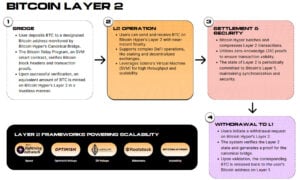The US Dollar Index (DXY), which measures the value of the US Dollar (USD) against six major currencies, is gaining ground after two days of losses and trading around 98.90 during the Asian hours on Wednesday. The Greenback could face challenges as traders expect the Federal Reserve (Fed) to deliver a rate cut later in the North American session.
The Fed is widely expected to lower interest rates by another quarter point, bringing the benchmark rate to 3.75-4.00%, at its October meeting. The CME FedWatch Tool indicates that markets are now fully pricing in a Fed rate cut in October and a 91% possibility of another reduction in December.
Traders will be looking forward to any signals from Fed Chair Jerome Powell’s speech at the post-meeting conference regarding the pace of future easing. The October CNBC Fed Survey also indicates that the Fed could implement additional rate reductions over the next two meetings.
US President Donald Trump stated in South Korea on Wednesday that the Federal Reserve will not raise interest rates. Trump projected that investments totaling around $21–$22 trillion would flow into the United States (US) by the end of his second term and forecast 4% GDP growth in the next quarter, noting that factories across the country are booming.
President Trump also noted that Chinese President Xi will arrive tomorrow, expressing optimism that the meeting will result in a “great deal” for both the US and China. The US Dollar could gain further support if the two leaders agree on a framework that halts additional US tariffs and China’s restrictions on rare earth exports. Meanwhile, the ongoing US government shutdown has entered its fifth week, delaying the release of key economic data crucial for guiding monetary policy decisions and shaping market expectations.
US Dollar FAQs
The US Dollar (USD) is the official currency of the United States of America, and the ‘de facto’ currency of a significant number of other countries where it is found in circulation alongside local notes. It is the most heavily traded currency in the world, accounting for over 88% of all global foreign exchange turnover, or an average of $6.6 trillion in transactions per day, according to data from 2022.
Following the second world war, the USD took over from the British Pound as the world’s reserve currency. For most of its history, the US Dollar was backed by Gold, until the Bretton Woods Agreement in 1971 when the Gold Standard went away.
The most important single factor impacting on the value of the US Dollar is monetary policy, which is shaped by the Federal Reserve (Fed). The Fed has two mandates: to achieve price stability (control inflation) and foster full employment. Its primary tool to achieve these two goals is by adjusting interest rates.
When prices are rising too quickly and inflation is above the Fed’s 2% target, the Fed will raise rates, which helps the USD value. When inflation falls below 2% or the Unemployment Rate is too high, the Fed may lower interest rates, which weighs on the Greenback.
In extreme situations, the Federal Reserve can also print more Dollars and enact quantitative easing (QE). QE is the process by which the Fed substantially increases the flow of credit in a stuck financial system.
It is a non-standard policy measure used when credit has dried up because banks will not lend to each other (out of the fear of counterparty default). It is a last resort when simply lowering interest rates is unlikely to achieve the necessary result. It was the Fed’s weapon of choice to combat the credit crunch that occurred during the Great Financial Crisis in 2008. It involves the Fed printing more Dollars and using them to buy US government bonds predominantly from financial institutions. QE usually leads to a weaker US Dollar.
Quantitative tightening (QT) is the reverse process whereby the Federal Reserve stops buying bonds from financial institutions and does not reinvest the principal from the bonds it holds maturing in new purchases. It is usually positive for the US Dollar.
Source: https://www.fxstreet.com/news/us-dollar-index-advances-to-near-9900-ahead-of-fed-policy-decision-202510290520


